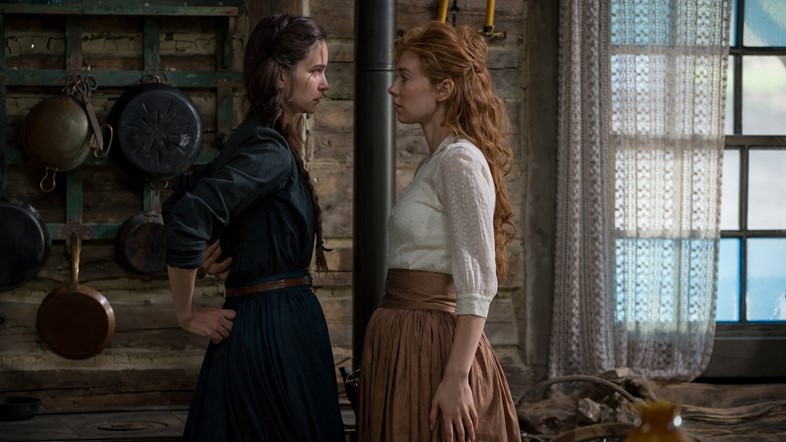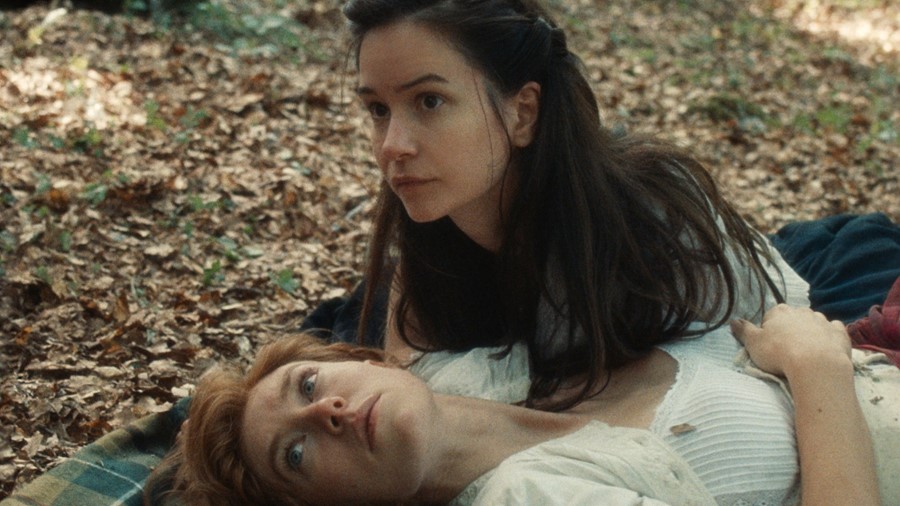“Sometimes stories choose you”: Director Mona Fastvold opens up to Martha Alexander about shooting her latest film The World to Come, which tells the tragic story of two farmers wives who fall in love in 1850s upstate New York
Farmers wives living in a remote landscape in the mid-1800s who begin an illicit affair – the elevator pitch of The World to Come could so easily be interpreted as a bawdy, steamy period drama accented by heaving busts and unpinned hair. But the film was in safe, subtle hands right from the screenplay by Ron Hansen and Jim Shepard, through to director Mona Fastvold and stellar cast including Katherine Waterston, Vanessa Kirby and Casey Affleck.
Set in rural upstate New York, The World to Come tells the tragic story of Abigail and Tallie, two women in strained marriages, each literally and metaphorically isolated, who fall in love with each other. Norwegian-born, New York-based Fastvold was instantly drawn to the story.
“It was an intuitive feeling that this project belongs to me; sometimes stories choose you when you’re lucky,” she says. “It felt like a piece of literature more than a script. It was so carefully written and had so much historical detail and yet I felt there was something modern about the approach to this relationship which really spoke to the present.”
While Fastvold, who is also a writer, speaks of how she was able to “move into the story”, she refutes the idea that the film has her mark on it – or that it is hers, preferring to highlight how much of filmmaking is collaborative.
“There is no room for ego when you are directing,” she says, detailing how she likes to remain open to ideas from any of the collaborators on set. “You have to create room to pull out what best serves the story.”

The relationship between Tallie and Abigail is touching, intimate and tragic. The film lifts with tension and pure romance at times – such as when Tallie gives Abigail a much-coveted Atlas, clearly a symbol of adventure and escape. But the heart of the film can be found in its title, which suggests a future ahead of two women who have no words for what they want or feel.
Fastvold thought a lot about the title and everyone who came after Abigail and Tallie. “The little brave decisions that they make by choosing to pursue this relationship and to have these – at the time – dangerous conversations about who they are as women in society and how they feel about one another and dare to dream outside the four corners of these houses they are confined to. That brave way of thinking leads to someone else who stands on their shoulders making an even more brave decision and eventually here I am directing this film telling this story.”
The World to Come received critical acclaim and the Queer Lion Award at Venice Film Festival – and has been embraced by the LGBTQ+ community. “So far we’ve gotten incredibly lovely letters from all over the world, particularly from young women who have connected with the story,” says Fastvold.
Filming took place in the unspoilt and extraordinarily, often bleakly beautiful landscape of Romanian mountains over a period of 24 days, split into blocks of 12 – one in summer and one in winter so as to capture all seasons on camera. It was hard, unglamorous work. “Everyone had to walk through the mud and eat whatever was served to them,” explains Fastvold. “But there was the luxury of the incredibly beautiful nature surrounding you and eggs from the chickens outside and fresh milk.” The rustic remoteness was a boon for the film not only in terms of a perfect set, but also because it transported the cast back some 150 years.
Fastvold admits that she was lucky to get the exact cast she wanted – and that they got along so well with strong chemistry from the start. Working environment is so important to Fastvold, who was a child actor with mixed memories of life on set. “Growing up on film sets I often felt a tense and frantic energy,” she recalls. “I try to create a more positive energy on set. But that’s hard when you have little time to shoot and you’re dealing with animals and weather.”
The environment she strives to foster during filming is one of inclusivity, especially towards mothers. “On The World to Come we had a lot of babies on set,” she says, listing cast and crew – herself included – with newborns, breastfeeding babies and toddlers. “I don’t need my trailer so that was a breastfeeding room. We would stop for Katherine to breastfeed before moving on.”
That this seems wildly and brilliantly progressive in 2021 is depressing, which is specifically why Fastvold believes in the importance of having women in both the director and producer chairs. “Having children is a natural part of life and work,” says Fastvold, who admits that there have been many occasions when people in the industry will not tell her they’ve just had a baby, presumably for fear of professional repercussions. “The stigma is hard. People think ‘you can’t do your job and [be a mother]’. But for me choosing was not an option – I wanted to be with my child while I was working so as much as I could I wanted to allow for [my crew] to choose that as well.”
What is really notable in a film which is essentially a story of love and attraction is how sex is handled: how it was shot and where it was placed in the film. Fastvold was not interested in shooting sex scenes for the sake of it. “A sex scene is a great way of telling a lot without any words which is always a great thing,” she explains, adding that camera placement is key to capturing intimacy, rather than voyeurism.
In the end, the love scenes are as intimate as Abigail’s narration. Along with the darkness of winter thawing into a bloom-filled spring to echo the progress of the women’s relationship, audiences are struck by a terrible, beautiful bitter-sweetness that serves to make the film’s essence both timeless and universal.
The World to Come is at UK cinemas from 23 July.
